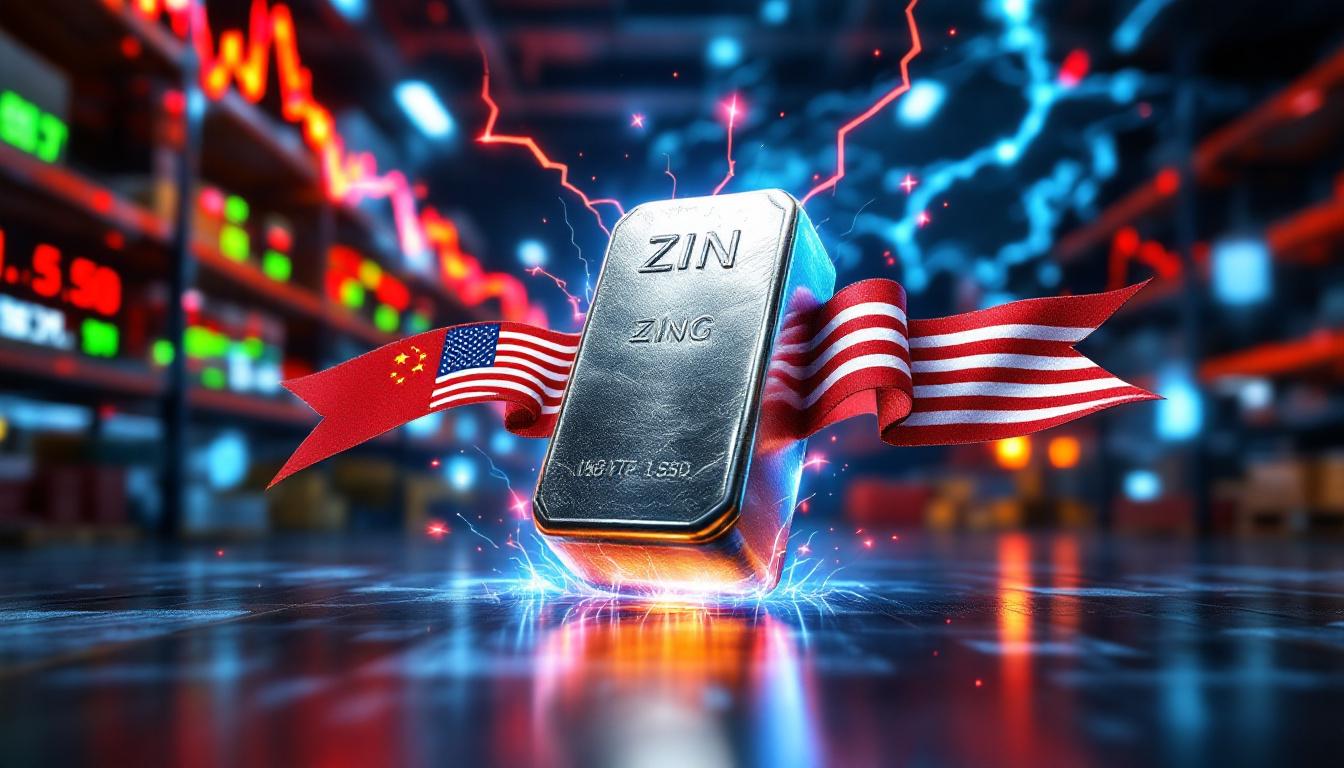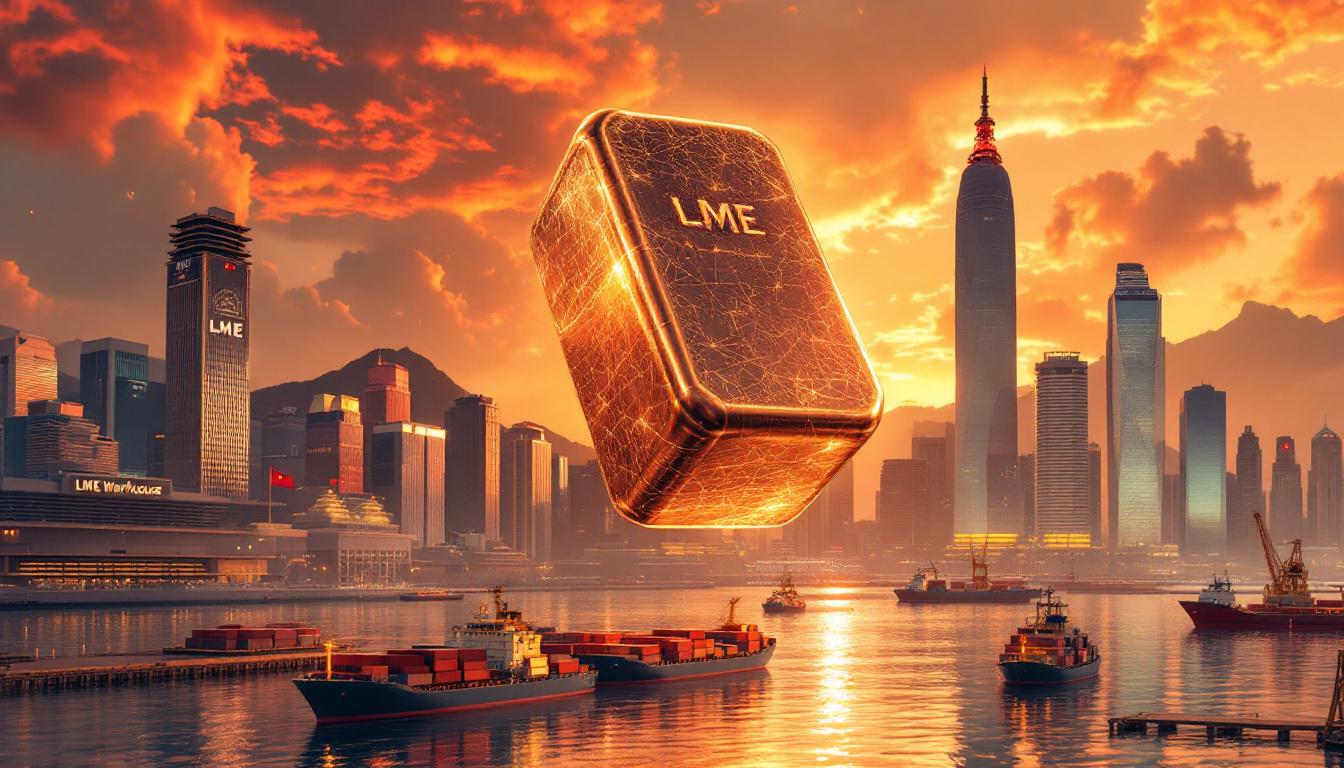What is the Quadrilateral Security Dialogue?
The Quadrilateral Security Dialogue, commonly known as the "Quad," represents a strategic diplomatic alliance between four democratic nations: Australia, the United States, Japan, and India. Initially formed in 2007 in response to the Indian Ocean tsunami relief efforts, the partnership went dormant before being revitalized in 2017 amid growing concerns about regional security dynamics in the Indo-Pacific.
What began as primarily security-focused cooperation has evolved significantly, with the Quad now addressing a comprehensive range of challenges facing the region. The alliance has expanded its focus to include economic resilience, technological cooperation, climate change initiatives, and perhaps most notably, securing vital supply chains for critical minerals energy transition.
"Australia's critical minerals riches and expertise are increasingly recognized as a key to security in the region, positioning the nation as a cornerstone of the Quad's strategic objectives." — SmallCaps analysis
Origins and Evolution of the "Quad" Partnership
The Quad's journey has been marked by periods of both dormancy and intensive cooperation. Following its 2017 revival, ministerial-level meetings became regular occurrences, culminating in the first leaders' summit in March 2021. This elevation to leader-level engagement signaled the growing strategic importance of the alliance in responding to evolving Indo-Pacific challenges.
The partnership has developed robust working groups focusing on climate change, critical and emerging technologies, infrastructure coordination, and most significantly for Australia, critical minerals security and supply chain resilience.
Core Objectives and Strategic Focus
While the Quad does not function as a formal military alliance like NATO, it serves as a platform for coordinating diplomatic, economic, and strategic policies among democracies with shared interests in a free and open Indo-Pacific region.
The group's mission extends well beyond traditional security concerns to include pandemic response, technological innovation, and infrastructure development. However, economic security—particularly through reliable access to critical minerals—has emerged as one of the most consequential focus areas for the alliance's collaborative efforts.
As geopolitical tensions have risen in the Indo-Pacific, the Quad has increasingly positioned itself as a counterbalance to non-market economies' influence over crucial supply chains, with critical minerals at the center of this strategic priority.
Why Are Critical Minerals Central to the Quad's Agenda?
Critical minerals have emerged as a cornerstone of the Quadrilateral Security Dialogue's strategic agenda, recognized as foundational elements for both economic prosperity and national security across all four member nations. These resources represent far more than simple commodities—they are the building blocks of modern technology, clean energy systems, and defense capabilities.
The Quad's prioritization of critical minerals stems from a growing recognition that technological leadership and energy transition goals cannot be achieved without secure access to these resources. From electric vehicle batteries to semiconductor manufacturing and renewable energy infrastructure, critical minerals form the backbone of industries driving economic growth and strategic advantage in the 21st century.
Strategic Importance in Global Supply Chains
Critical minerals such as lithium, rare earth elements, cobalt, and nickel serve as essential components in technologies ranging from smartphones and electric vehicles to advanced weapons systems and renewable energy infrastructure. Their strategic importance has grown exponentially as nations pursue ambitious climate goals and digital transformation.
The Quad nations collectively represent major consumers of these minerals, with industries dependent on reliable access to maintain manufacturing capabilities, technological edge, and energy security. Australia's position as a major producer of many of these minerals gives the country unique leverage within the partnership.
- Clean energy transition: Critical minerals are fundamental to solar panels, wind turbines, and battery storage systems
- Defense applications: Advanced military hardware relies on specialized minerals for electronics, guidance systems, and armor
- Digital infrastructure: Data centers, telecommunications networks, and computing hardware all require significant mineral inputs
- Industrial competitiveness: Manufacturing leadership increasingly depends on access to high-quality mineral resources
Countering Supply Chain Vulnerabilities
The Quad has explicitly identified alarming vulnerabilities in global critical mineral supply chains, with Foreign Affairs Minister Penny Wong highlighting the alliance's "deep concern about the abrupt constriction and future reliability of key supply chains, specifically for critical minerals."
"We underscore the importance of diversified and reliable global supply chains—reliance on any one country exposes our industries to economic coercion, price manipulation, and supply chain disruptions." — Foreign Affairs Minister Penny Wong
This vulnerability became painfully apparent during recent global disruptions, when concentrated processing capabilities in certain nations created bottlenecks that affected industries worldwide. The COVID-19 pandemic and subsequent geopolitical tensions have underscored how overdependence on single-source processing creates susceptibility to:
- Supply disruptions during crises
- Price volatility from market manipulation
- Economic coercion through export restrictions
- Quality control inconsistencies
- Environmental and social governance concerns
The Quad's focus on critical minerals represents a strategic pivot toward supply chain resilience, with Australia's mineral wealth positioned as a crucial component of the alliance's approach to addressing these vulnerabilities.
How Does Australia Contribute to the Quad's Mineral Strategy?
Australia stands as the mineral powerhouse within the Quadrilateral Security Dialogue, bringing unparalleled resource wealth and mining expertise to the partnership. With abundant reserves of key critical minerals across the continent, Australia provides the Quad with a democratic, reliable source of resources essential for everything from clean energy technologies to advanced defense systems.
The nation's contribution extends beyond simply possessing mineral reserves—Australia combines world-class geological knowledge, advanced mining techniques, and increasingly, processing capabilities that allow it to serve as a cornerstone of the Quad's mineral security strategy.
Australia's Critical Mineral Wealth
Australia possesses some of the world's most significant deposits of critical minerals, making it an indispensable partner in the Quad's strategy. The country hosts substantial reserves of lithium (the world's largest), nickel, cobalt, rare earth elements, and numerous other minerals essential to modern technology and clean energy systems.
This geological fortune positions Australia as a natural counterbalance to concentrated supply chains, providing Quad partners with access to resources governed by transparent market principles and strong environmental standards.
"The road to net zero runs through Australia's critical minerals sector." — Resources Minister Madeleine King
This statement from Minister King highlights the dual importance of Australia's mineral contribution: supporting both geopolitical security objectives and global climate goals simultaneously. The nation's reserves support everything from battery manufacturing in Japan to defense applications in the United States and renewable energy development in India.
Australian critical mineral deposits are characterized by:
- High-quality ore bodies with favorable mineralogy for processing
- Geographic diversity across multiple states and territories
- Established infrastructure including ports, rail, and energy access
- Technically skilled workforce with extensive mining expertise
- Strong regulatory frameworks ensuring responsible development
Production Growth and Resource Expansion
Despite challenging global market conditions affecting commodity prices, Australia has maintained impressive growth in critical mineral production. Most notably, Australian lithium output increased by approximately 60,000 tonnes of lithium carbon equivalent (15% year-on-year) in the 12 months to March 2025.
This production growth demonstrates Australia's ability to respond to market signals and alliance priorities, scaling operations to meet increasing demand from Quad partners and beyond. The country's established mining sector has proven adaptable in rapidly developing new resources when strategic needs arise.
Production expansions have been supported by:
- Increased exploration activities in prospective regions
- Technological innovations improving extraction efficiency
- Capital investments in processing infrastructure
- Strategic partnerships with Quad nations for offtake agreements
- Government facilitation of approval processes for priority projects
Inventory Diversification Across Multiple Minerals
Beyond headline minerals like lithium, Australia has systematically expanded its economic inventories across numerous critical minerals essential to the Quad's strategic objectives. According to the latest resource assessments, Australia critical reserves have achieved remarkable inventory growth across its critical mineral portfolio:
| Critical Mineral | Inventory Increase |
|---|---|
| Platinum Group Elements | 30% |
| Graphite | 27% |
| Lithium | 20% |
| Niobium and Vanadium | 18% each |
| Manganese Ore | 16% |
| High-Purity Alumina | 14% |
| Molybdenum, Rare Earths, Tantalum | 10% each |
| Rutile | 6% |
| Bauxite | 5% |
This diversification represents a strategic approach to resource development, ensuring Australia can support multiple supply chains rather than focusing exclusively on a single mineral. The breadth of Australia's mineral portfolio makes it uniquely valuable to the Quad, capable of addressing various technological and industrial needs simultaneously.
The country's exploration sector continues to identify new resources, supported by advanced geological survey work and innovative exploration techniques that expand Australia's mineral inventory year after year.
What Challenges Does the Quad Address in Critical Mineral Markets?
The Quadrilateral Security Dialogue has identified several systemic issues in global critical mineral markets that threaten both economic prosperity and national security. These challenges extend beyond simple supply and demand dynamics to encompass geopolitical influences, market distortions, and deliberate attempts to weaponize resource access for strategic advantage.
By highlighting these challenges explicitly, the Quad has signaled its determination to build more resilient, transparent, and market-based systems for critical mineral trade—with Australia's resources playing a central role in this transformation.
Non-Market Practices and Economic Coercion
The Quad has expressed specific concerns about distortionary approaches to critical mineral markets, with member nations jointly condemning "non-market policies and practices for critical minerals, certain derivative products, and mineral processing technology" that undermine fair competition and create artificial dependencies.
These practices include:
- Export restrictions that create artificial scarcity in global markets
- State-directed investment that disregards commercial viability
- Opaque subsidy programs that undermine competing producers
- Forced technology transfers as conditions for market access
- Strategic stockpiling to influence global prices
Such practices distort global markets and undermine the security objectives of the Quad nations, creating vulnerabilities that extend from economic concerns to defense capabilities. The alliance has explicitly linked these practices to broader concerns about economic coercion, where resource dependencies become leverage points for geopolitical pressure.
"Reliance on any one country for processing and refining exposes our industries to economic coercion." — Foreign Affairs Minister Penny Wong
This statement reflects growing awareness that critical mineral supply chains have become tools of strategic competition, with market concentration enabling various forms of economic pressure against dependent nations.
Processing and Refining Concentration Risks
While raw material extraction occurs across multiple countries, the Quad has identified the concentration of processing and refining capabilities as a particularly acute vulnerability. In many critical mineral supply chains, extraction occurs in one location, but processing is concentrated in just a handful of facilities globally—creating bottlenecks that affect entire industries.
The alliance has highlighted that reliance on any single nation for these intermediate steps exposes industries across all four Quad members to multiple threats:
-
Economic coercion through market control
- Selective application of export permits or licenses
- Manipulation of processing fees during geopolitical tensions
- Prioritization of domestic customers during shortages
-
Price manipulation tactics
- Coordinated production cuts to inflate global prices
- Subsidized overproduction to undermine competing producers
- Opaque pricing mechanisms disconnected from market fundamentals
-
Supply chain disruptions
- Single points of failure during natural disasters or conflicts
- Vulnerability to labor disputes or energy shortages
- Logistics bottlenecks affecting global distribution
-
Compromised national security
- Dependency on potentially adversarial nations for defense inputs
- Intelligence vulnerabilities through supply chain monitoring
- Inability to surge production during security emergencies
The Quad's focus on diversifying processing and refining capabilities—not just raw material sources—represents a sophisticated understanding of where the most significant vulnerabilities exist in modern mineral supply chains.
Australia's growing emphasis on developing domestic processing capabilities aligns perfectly with this strategic priority, offering Quad partners an alternative that reduces these concentration risks.
How Is Australia Responding to Critical Mineral Demand?
Australia has implemented a comprehensive approach to meeting rising global demand for critical minerals, particularly from Quad partner nations seeking secure supply chains. This strategy encompasses everything from accelerated exploration to enhanced processing capabilities, positioning Australia as not just a source of raw materials but an integrated partner in mineral supply chains.
The nation's response combines government policy support, private sector investment, and research partnerships to strengthen Australia's position as a cornerstone of global critical mineral security—especially for fellow democracies seeking alternatives to concentrated supply chains.
Exploration and Resource Definition Expansion
According to Geoscience Australia, the domestic resources industry has actively responded to increased global demand through additional exploration activities and enhanced resource definition efforts. This systematic expansion of Australia's mineral knowledge base ensures a pipeline of future projects to support long-term supply security.
Australian exploration activities have notably increased in:
- Greenfield regions with potential for new mineral discoveries
- Brownfield sites where existing operations can be expanded
- Deep exploration targeting resources below current mining depths
- Multi-element assessments identifying co-located critical minerals
- Advanced geological mapping using new sensing technologies
This exploration surge has been supported by government initiatives including the $225 million Critical Minerals Development Program and enhanced funding for pre-competitive geoscience data collection through Geoscience Australia's Exploring for the Future program.
The results speak for themselves, with new discoveries regularly announced across the critical minerals spectrum—from rare earths in Western Australia to battery minerals in South Australia and technology metals in Queensland. These discoveries maintain Australia's pipeline of future production capacity essential to meeting Quad partners' long-term needs.
Supply Chain Diversification Initiatives
Beyond simply increasing raw material availability, Australia is strategically positioning itself as a reliable alternative supplier within global critical mineral supply chains. This positioning directly addresses the Quad's concerns about supply chain concentration by offering democratic nations access to resources without the geopolitical complications associated with some other major producers.
Australia's supply chain diversification initiatives include:
-
Processing capacity development
- Investment in lithium refinery development
- Rare earth separation and processing plants
- Battery-grade nickel sulfate production
- High-purity manganese processing
-
Strategic international partnerships
- Co-investment arrangements with Quad partners
- Technology sharing for efficient processing methods
- Joint research on recycling and circular economy approaches
- Coordinated standards for ESG compliance
-
Targeted trade agreements
- Enhanced critical minerals provisions in free trade agreements
- Reduced barriers for processed mineral products
- Technical standards harmonization with key partners
- Recognition of environmental and social certifications
These initiatives collectively strengthen Australia's role as more than simply a quarry for raw materials—instead becoming an integrated partner in secure, resilient supply chains that align with the Quad's strategic objectives.
The Australian government has further supported this positioning through trade missions, investment facilitation, and diplomatic engagement that highlights the nation's reliability advantage compared to suppliers subject to non-market influences or potential export restrictions.
What Are the Economic Implications of Australia's Critical Mineral Position?
Australia's emergence as a critical mineral powerhouse within the Quad framework carries profound economic implications that extend well beyond the mining sector. This position creates opportunities for value-added processing, technological development, and strategic industries that could reshape Australia's economic landscape for decades to come.
The nation's critical mineral wealth, combined with its strategic position within the Quad alliance, opens pathways for economic diversification and industrial development previously unavailable to Australia—potentially transforming traditional mining operations into sophisticated technology supply chains with significantly higher value potential.
Growth Opportunities in Downstream Processing
Australia's critical minerals strategy extends well beyond basic extraction to developing sophisticated domestic processing capabilities. This downstream integration represents a profound shift from Australia's historical position as primarily an exporter of raw materials, potentially capturing substantially more value from the supply chain.
The economic benefits of downstream processing include:
- Higher-value exports with pricing premiums for processed products
- Increased employment with more technical roles than extraction alone
- Knowledge economy growth through research and development activities
- Industrial clustering effects as related businesses co-locate
- Reduced transport costs by shipping higher-value, lower-volume products
For example, processing spodumene concentrate (6% lithium) into battery-grade lithium hydroxide can increase product value by 5-7 times, while creating additional high-skilled jobs in chemical processing. Similar value multiplication exists across the critical minerals spectrum, from rare earths to high-purity manganese and vanadium products.
The development of a lithium hydroxide facility in Western Australia exemplifies this approach, transforming relatively low-value mineral concentrates into battery-ready materials worth thousands of dollars per tonne. This single facility represents hundreds of millions in investment and dozens of high-skilled technical positions—economic benefits that would be lost if only raw materials were exported.
Investment and International Partnerships
The Quad framework provides unprecedented opportunities for increased investment and technology sharing between member nations, potentially accelerating Australia's critical mineral sector development beyond what domestic capital markets could support alone.
These partnership opportunities include:
-
Foreign direct investment
- Joint ventures in extraction and processing
- Co-funding arrangements for capital-intensive facilities
- Risk-sharing structures for technology development
- Concessional financing for strategic projects
-
Technology transfer
- Advanced processing techniques from Japanese partners
- Digital automation systems from American technology firms
- Metallurgical breakthroughs from research collaborations
- Energy efficiency innovations for processing operations
-
Market access guarantees
- Long-term offtake agreements with Quad partners
- Price stabilization mechanisms to support investment
- Technical certification and standard alignment
- Fast-tracked regulatory approvals for critical products
The economic impact of these partnerships extends beyond direct investment to include knowledge transfers, technology spillovers,
Ready to Invest in the Next Major Mineral Discovery?
Gain instant alerts to significant ASX mineral discoveries with Discovery Alert's proprietary Discovery IQ model, transforming complex mineral data into actionable investment insights. Understand why historic discoveries can generate substantial returns by visiting Discovery Alert's dedicated discoveries page and begin your 30-day free trial today to position yourself ahead of the market.




